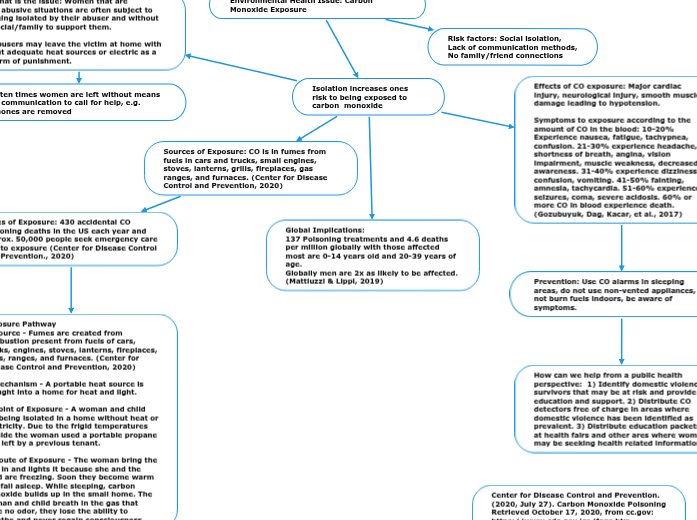av JAMI CARLSON 5 år siden
609
Environmental Health Issue: Carbon Monoxide Exposure

av JAMI CARLSON 5 år siden
609

Mer som dette
Exposure Pathway 1. Source - Fumes are created from combustion present from fuels of cars, trucks, engines, stoves, lanterns, fireplaces, grills, ranges, and furnaces. (Center for Disease Control and Prevention, 2020) 2. Mechanism - A portable heat source is brought into a home for heat and light. 3. Point of Exposure - A woman and child are being isolated in a home without heat or electricity. Due to the frigid temperatures outside the woman used a portable propane grill left by a previous tenant. 4. Route of Exposure - The woman bring the grill in and lights it because she and the child are freezing. Soon they become warm and fall asleep. While sleeping, carbon monoxide builds up in the small home. The woman and child breath in the gas that have no odor, they lose the ability to breathe and never regain consciousness.
How can we help from a public health perspective: 1) Identify domestic violence survivors that may be at risk and provide education and support. 2) Distribute CO detectors free of charge in areas where domestic violence has been identified as prevalent. 3) Distribute education packets at health fairs and other ares where women may be seeking health related information.